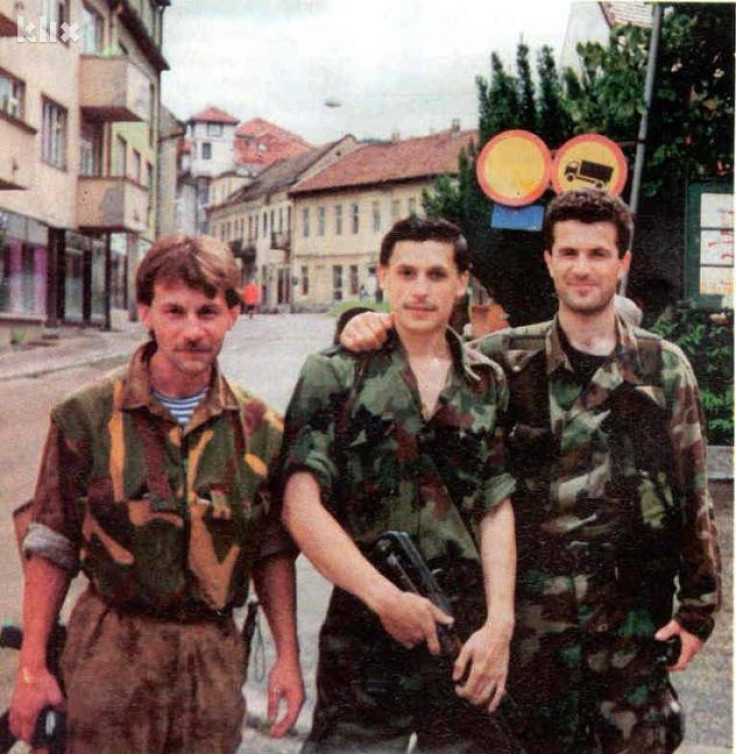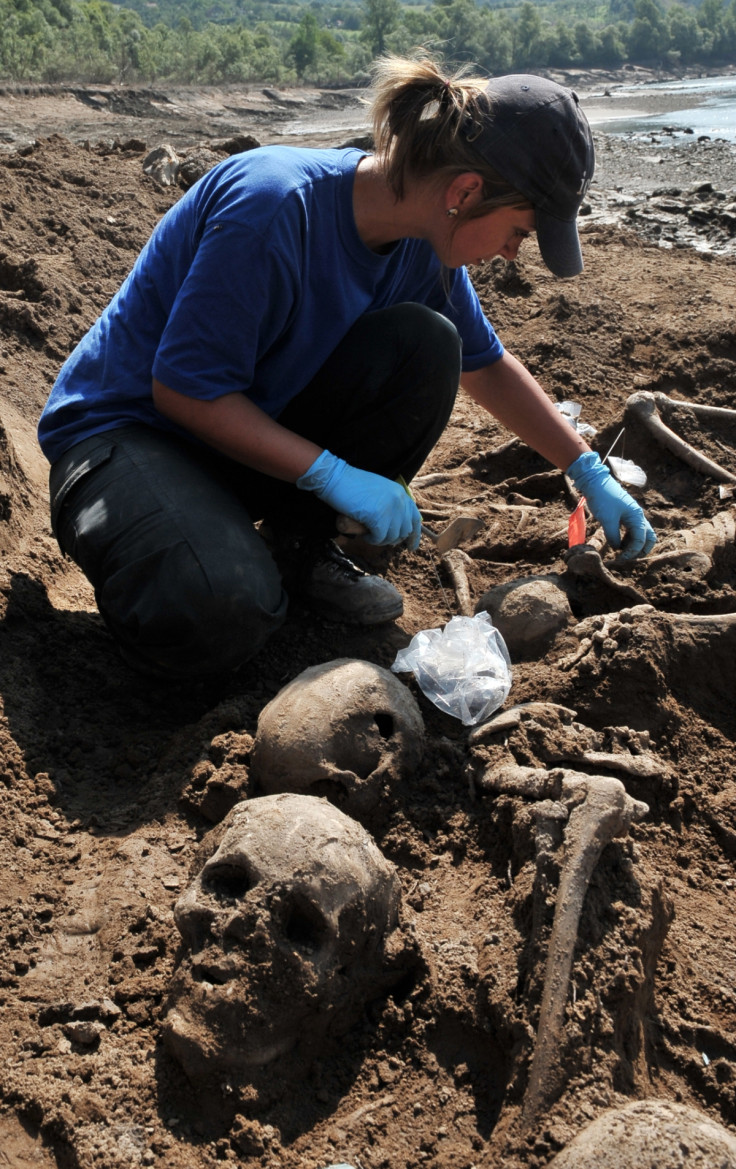Bosnia Strpci massacre arrests: Serb leaders 'directly involved' in killing of Muslims

In an unusual collaborative bid, Serbia and Bosnia authorities have arrested 15 people suspected of one of the most obscure and forgotten chapters of the bloody Balkan war in the 1990s; the Strpci massacre.
The suspects, five in Serbia and 10 in Bosnia, include the brother of Milan Lukic, the jailed Serb war criminal who went on a campaign of terror to purge the eastern Bosnian town of Visegrad of its majority Muslim population in 1992.
Lukic commanded the Serbian unit Avengers which kidnapped 19 Bosnian Muslims and one Croat from a train that made an unscheduled stop at the remote station of Strpci, at the border with Serbia, on 27 February 1993. The Muslim men were identified through their names.
"While the train was still moving, the military was pacing the corridors with their weapons. As soon as the train stopped, three army officers were standing outside of every coupe. First they identified the people in the corridors and took the Muslims away and crammed the other into the coupes," said one witness. No one protested the raid and the train carried on in silence.
Then, the Bosnian Muslims were taken to a primary school in a village near Visegrad, where they were robbed and physically abused. They were restrained with wires, beaten hard with rifle butts and stripped naked. Drenched in blood, the prisoners were taken by truck towards Visegrad, where they were killed in the garage of a burned house near the river Drina.
They were shot in the back of the head and their bodies just left in and around the house. The morning after, they were dragged by tractors and dumped in the river Drina. The remains of only three bodies have been found in Lake Perucac, along with those of more than 160 civilian victims slaughtered in Visegrad.
The river Drina
The appalling ritual of slaughtering Bosnian Muslims and dropping them in the majestic river Drina was investigated by IBTimes UK in the special documentary Battle for Bosnia: Fighting to Remember the Genocide.

During the war, the river Drina and the 16th century Ottoman bridge that decorate the city became a nightmarish bloodsoaked centre of the place where Bosnian Muslim men, women and children were slaughtered by Bosnian Serb paramilitary forces and thrown into the water. At least 3,000 Muslims were massacred in the town by Lukic troops, who used to grab any piece of glass they could find and slit the throats of innocent civilians. One victim was found with a screwdriver in their neck.
Muslim men were rounded up and murdered. Hundreds of women were detained and mass-raped at the spa, the infamous Vilina Vlas. Women, children and elderly people were locked in houses and burnt to death.
The latest arrest finally shines a light on those responsible for the Strpci massacre and, more importantly, could possibly implicate Serbia's top former and current officials.
Collusion
Along with Gojko Lukic, the arrested include former associate Boban Indjic, ex-militia members and Luka Dragicevic, a former Bosnian Serb army general who commanded the military in the border zone. While Milan Lukic has been recognised as the mastermind of the massacre, authorities are keen to demonstrate collusion between militias operating in the area and leaders of the Bosnian Serb republic.
"The arrest of Dragicevic, general in the Bosnian Serb army, shows that the official army of Republika Srpska was actively involved in the killing of 19 Muslims and a Croat. It is important to stress that those people were killed not by some randomly organised group: official structures of the Bosnian Serb republic were involved in that," Jasmina Lazovic of the Youth Initiative for Human Rights, told IBTimes UK.
A spokesperson for the Bosnia and Herzegovina general prosecutor's office also confirmed to IBTimes UK that "high-rank officials at Bosnian Serb republic were directly involved in the kidnapping and killing".
Indjic (or Indic), a close associate of Milan Lukic, also appears in a picture shot in Visegrad in 1992 which allegedly proved the involvement of Igor Girkin 'Strelkov' in the Bosnian war.
A veteran Russian military officer turned separatist leader, Strelkov fought side by side with the Serb forces in a group of Russian monarchists known as the Tsar's Wolves, under the command of Alexander 'Ace' Muakharev, who also appears in the picture.

Waiting for the truth
The collusion between the Bosnian Serb army, which was financed directly from Serbia and controlled by the military and political leadership of Yugoslavia, and militias operating in the area has been debated for 20 years.

Documents issued by the headquarters of Bosnian Serb warlord Ratko Mladic and seen by AP show that an order "to all troops in Bosnia to capture any Muslims passing through Serb-controlled territories" was delivered at the time.
That could demonstrate once and for all that the Strpci massacre was ordered by higher-up than previously thought. Other documents show that Yugoslav authorities had been warned in advance about the abduction.
Mladic has been charged with genocide by the UN war crimes tribunal at the Hague, along with Serbian president Slobodan Milosevic and Bosnian Serb leader Radovan Karadzic. Lukic is serving a life sentence at the UN court for the atrocities committed in Bosnia.
But families of the victims are still "expecting the truth on what happened to their loved ones and where their bodies are," Lazovic said.
In the 1990s, Bosnia became the major battleground in a violent and bitter multi-sided war. According to official estimates, 100,000 people were killed during a conflict in which Bosnian Serb forces carried out ethnic cleansing against Bosnian Muslims across a large part of the country in an effort to create an homogenous Serb territory joining Serbia to Serbian Bosnia and Croatia.
The peace agreement which ended the 1992-95 war, signed in Dayton, Ohio, split the country into two autonomous entities: the Bosnian Federation and Republika Srpska, or Serb Republic.
Watch the full documentary, Battle for Bosnia: Fighting to Remember the Genocide, below:
© Copyright IBTimes 2024. All rights reserved.






